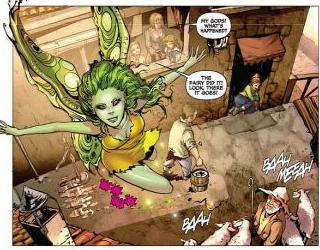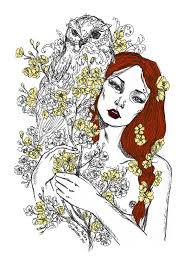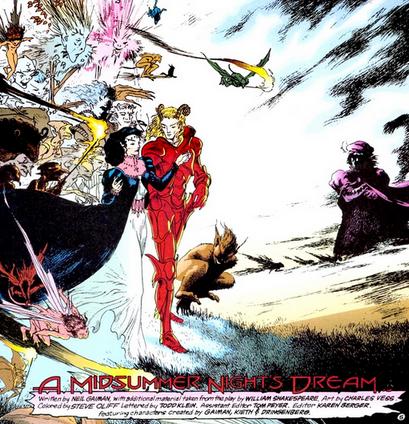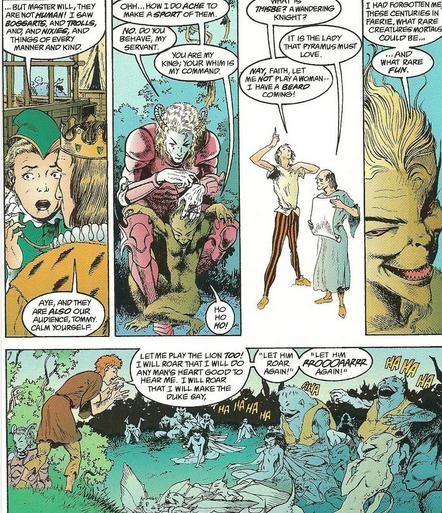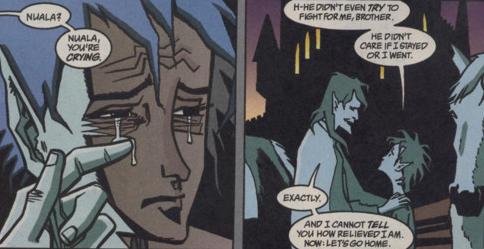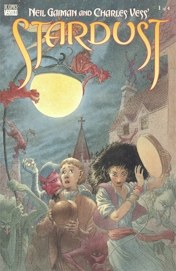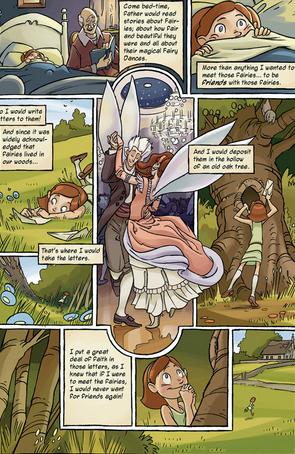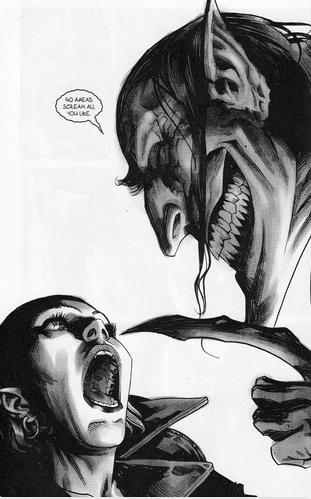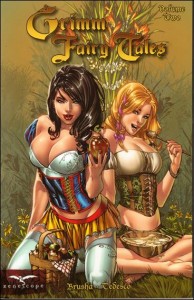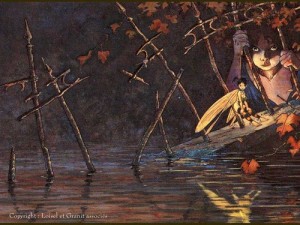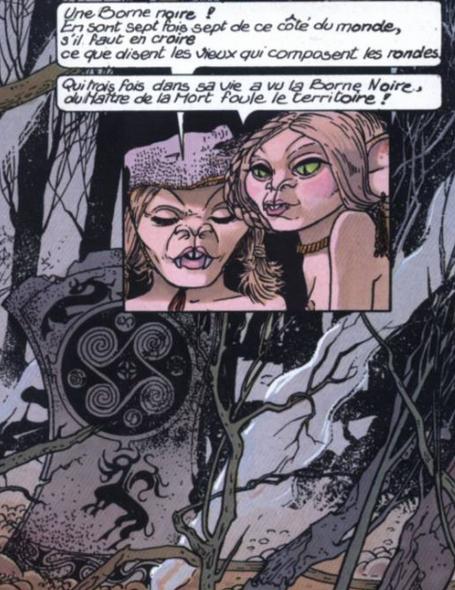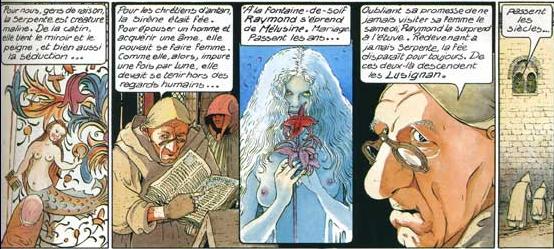Comics have included fairies since before the Second World War. But in the last generation fairies have found their own space in graphic novels. A pioneer in this regard was Neil Gaiman who included fairies in the Sandman series. There is a case to be made that the fairies finest hour in any form of literature in the last forty years was Gaiman’s Midsummer Night’s Dream (Land of Dreams) when Oberon and Titanian and a terrifying Puck, come with the rest of the fairy tribe to watch Shakespere put on A Midsummer Night’s Dream. Gaiman is always original, but the tale is perfectly balanced and having read it numerous times over the last twenty five years we can only bow our heads.
Later in the Sandman series a less convincing character, Nuala, becomes a prisoner of the Sandman for reasons that we’ve never fathomed.
There are also frequent fairy references in Gaiman and Vess’s Stardust (which is kind of a comic).
Gaiman was followed, naturally enough, by others: successful pioneer attract rivals. Bone by Jeff Smith describes a fantasy world where some small amorphous hobbit like characters battle with human allies against sharp-teethed boggarts. Here fairy-lore is not mentioned but the parallels are there for any readers. Bone can now be bought in a single chunky volume for ten dollars. You could wile away a very long afternoon reading the collected Bone or save it for a migraine.
Then, there, is Bill Willingham’s Fables series that sees a series of fairy tale characters set up house in New York. It is true that these are not fairies, in the strict sense. But the vocabulary is fairy: ‘glamour’ etc And an underlying theme is the uneasy relation between the fables and their worldly neighbours, the mundies (you and me). By the same author there is also the Jack series including Jack Frost, as fairy as we get with Willingham.
The Good Neighbours by Holly Black also plays with the uneasy, impossible relations between fairies and humans: the heroine Rue Silver is half fairy, half human and has daddy issues. It is a disappointment that Alan Moore never really did fairies (at least in comics) but Smax has some fairy-like humanoid folk.
Then there are Grimm Fairy Tales with occasional visits from fairies as well as other fabulous creatures. Not to be confused with the Big Book of Grimm, where various comic artists write the scariest Grimm fairy tales possible.
John Reppion is presently bringing out the nicely-named Damsels which has some fairy content.
Look back over these titles and you will see the range of plots is satisfying but no-one has really made important steps forward since Gaiman. For that you’ll have to turn to foreign writers. Loisel published his adult version of Peter Pan in French back in the late 1990s. It is now available in English and is well worth buying: the original makes more sense after you’ve read Loisel; it is almost as if he can say and draw things that Barrie would never have dared put on paper.
Another important French comic book writer whose Companions of Twilight (Les Compagnons du Crepuscule) has still not been translated into English (scandalously!!!!). The first (of three) volumes contains a terrifying visit to fairy: it is enough to look at Bourgeon’s little blighters to understand why (see below). There is a lot less fancy foot work than in Gaiman but as an evocation of the Middle Ages Bourgeon is perhaps even better. Look out for his take on Melusine and Breton mermaids as well. Buy this and you will regret nothing…
Then from Japan there is Fairy Tail a Japanese manga with a rather unusual take on fairies, in fact, one that many western readers will find almost unrecognizable. That is not the same as saying that Fairy Tale is not fun, if you don’t mind reading backwards…
Also there are various peculiar developments in manga fairies that we can’t cover as this is a family site. However, the curious (with strong stomachs) might wish to follow this link to Strange History... And, of course, there is the new thing: web comics with fairies.
